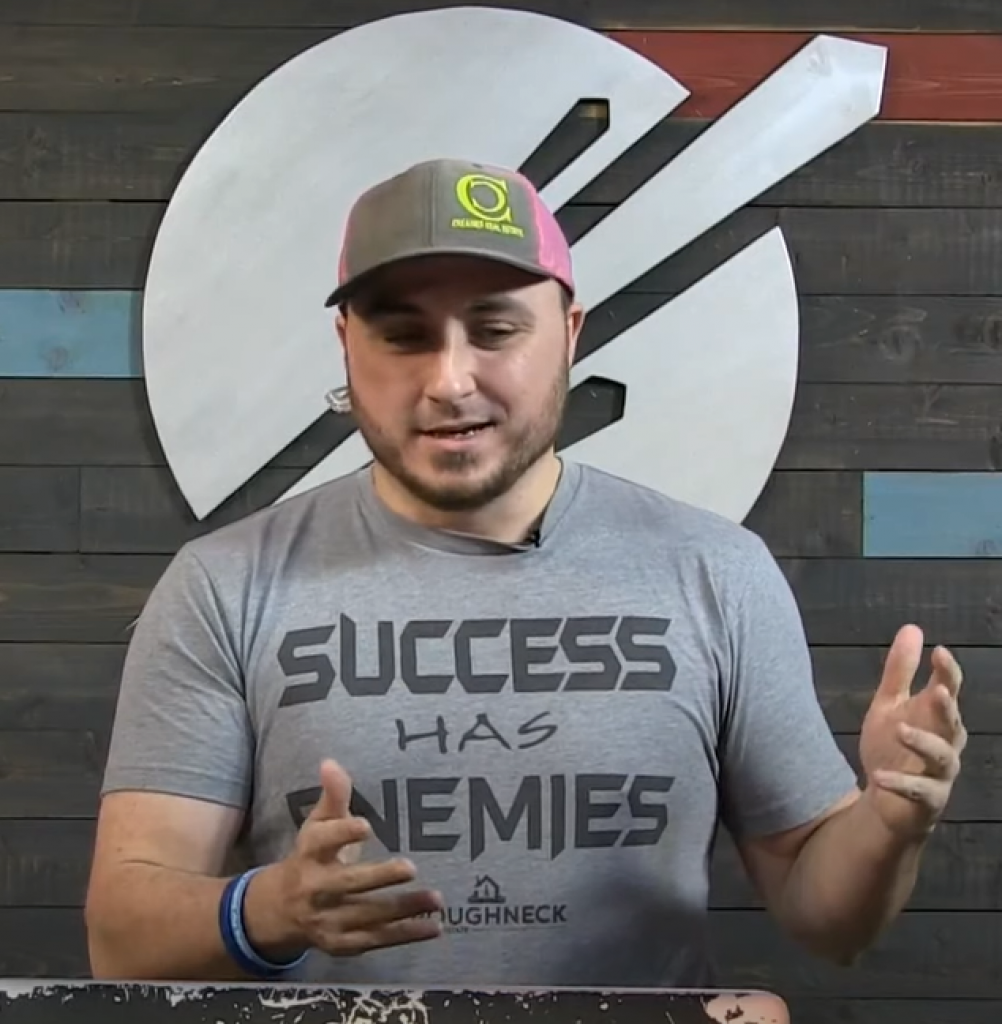An Expanding Portfolio Doesn’t Always Equal Expanding Income
After moderate success in the single-family investing world, Grant purchased a 2,200-unit building in Tucson, AZ, which he found attractive because it wasn’t advertised in any of the books. Over time, he acquired a total of 3,500 units in Tucson, which brought in a cozy $3.8M in annual rent. Luckily, he sold that portfolio before the market crash. He doubled his money on that transaction, but laments that 3-4x would have been a much bigger win.
Currently, Grant has 7,100 units at $1,700 per door. If you assume that an increase in the number of doors coupled with significant jump in rents lead to more money in your pocket, you would be wrong. Grant discusses how despite a steep growth curve, his income has remained the same, by Using his own portfolio, Grant illustrates why he believes that the most important number to consider is the total units. In Tucson, he got $1,100/month per unit and the San Diego venture commands $1,700/month per unit.
All things being equal, there’s more money in San Diego, but here’s the catch, there IS more money in San Diego, which leads to a hefty bump in the cost of living which means more operating expense. So why would investors acquire “higher rent” assets if there is no income increase? Because the goal is to build wealth and the real score is in the exit strategy, which could be to “stabilize and sell” within a short time or a long-term hold with infinite cash flow returns. Grant’s longest hold was in San Diego, CA, which he bought for $3,000,000 sold for $10,000,000, held for 15 years, took money out 3 times and stayed cash flow positive every year except the year they did a major renovation. In his current portfolio, his oldest asset is a 1,000-unit property that he has held for 10 years. He paid $15M down, tot $55M doing a cash refinance, and he will get a $4M payout this year. Not bad.

What’s All This About a Fund?
Grant cautions that, yes, you learn from failure, but with real investing, failure is extremely expensive. So, learn from other people’s mistakes. Don’t go where there are cranes (the machine, not the bird). New apartments are your competition. Instead, look for areas where the apartments have waiting lists. Don’t buy where there is snow (there are exceptions so always look at the numbers). People and jobs migrate to warmer climates so consider the current and future job opportunities. Know the cash flow, the scale of the project, and, most importantly, you must love it enough to live there. You can add any amenities you want, but be aware of the vicinity of anchoring businesses that provide convenience like Starbucks, Whole Foods, banks, etc. Avoid locations near malls as they tend to be a destination not a convenience. When walking a multifamily, talk to the tenants because they will tell you all the problems that a walk through won’t. Perform comprehensive due diligence and be keenly aware of deferred maintenance issues as they can crush your profit.
Things That Every Multifamily Investor Must Know
Grant cautions that, yes, you learn from failure, but with real investing, failure is extremely expensive. So, learn from other people’s mistakes. Don’t go where there are cranes (the machine, not the bird). New apartments are your competition. Instead, look for areas where the apartments have waiting lists. Don’t buy where there is snow (there are exceptions so always look at the numbers). People and jobs migrate to warmer climates so consider the current and future job opportunities. Know the cash flow, the scale of the project, and, most importantly, you must love it enough to live there. You can add any amenities you want, but be aware of the vicinity of anchoring businesses that provide convenience like Starbucks, Whole Foods, banks, etc. Avoid locations near malls as they tend to be a destination not a convenience. When walking a multifamily, talk to the tenants because they will tell you all the problems that a walk through won’t. Perform comprehensive due diligence and be keenly aware of deferred maintenance issues as they can crush your profit. Bank everything you will need for the next 5 years in deferred maintenance expense. A 15-year old HVAC system is reaching the end of its usable life.

An Expanding Portfolio Doesn’t Always Equal Expanding Income
After moderate success in the single-family investing world, Grant purchased a 2,200-unit building in Tucson, AZ, which he found attractive because it wasn’t advertised in any of the books. Over time, he acquired a total of 3,500 units in Tucson, which brought in a cozy $3.8M in annual rent. Luckily, he sold that portfolio before the market crash. He doubled his money on that transaction, but laments that 3-4x would have been a much bigger win.
Currently, Grant has 7,100 units at $1,700 per door. If you assume that an increase in the number of doors coupled with significant jump in rents lead to more money in your pocket, you would be wrong. Grant discusses how despite a steep growth curve, his income has remained the same, by Using his own portfolio, Grant illustrates why he believes that the most important number to consider is the total units. In Tucson, he got $1,100/month per unit and the San Diego venture commands $1,700/month per unit.
All things being equal, there’s more money in San Diego, but here’s the catch, there IS more money in San Diego, which leads to a hefty bump in the cost of living which means more operating expense. So why would investors acquire “higher rent” assets if there is no income increase? Because the goal is to build wealth and the real score is in the exit strategy, which could be to “stabilize and sell” within a short time or a long-term hold with infinite cash flow returns. Grant’s longest hold was in San Diego, CA, which he bought for $3,000,000 sold for $10,000,000, held for 15 years, took money out 3 times and stayed cash flow positive every year except the year they did a major renovation. In his current portfolio, his oldest asset is a 1,000-unit property that he has held for 10 years. He paid $15M down, tot $55M doing a cash refinance, and he will get a $4M payout this year. Not bad.
Know Your Acronyms
Grant cautions that, yes, you learn from failure, but with real investing, failure is extremely expensive. So, learn from other people’s mistakes. Don’t go where there are cranes (the machine, not the bird). New apartments are your competition. Instead, look for areas where the apartments have waiting lists. Don’t buy where there is snow (there are exceptions so always look at the numbers). People and jobs migrate to warmer climates so consider the current and future job opportunities. Know the cash flow, the scale of the project, and, most importantly, you must love it enough to live there. You can add any amenities you want, but be aware of the vicinity of anchoring businesses that provide convenience like Starbucks, Whole Foods, banks, etc. Avoid locations near malls as they tend to be a destination not a convenience. When walking a multifamily, talk to the tenants because they will tell you all the problems that a walk through won’t. Perform comprehensive due diligence and be keenly aware of deferred maintenance issues as they can crush your profit.


















